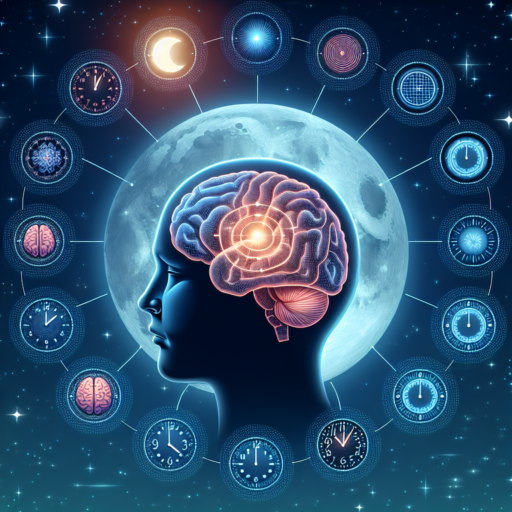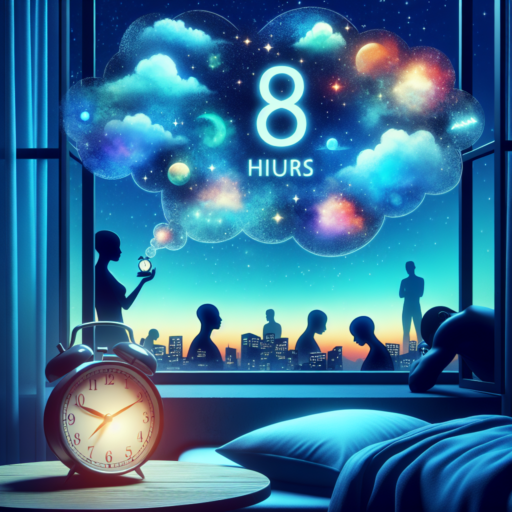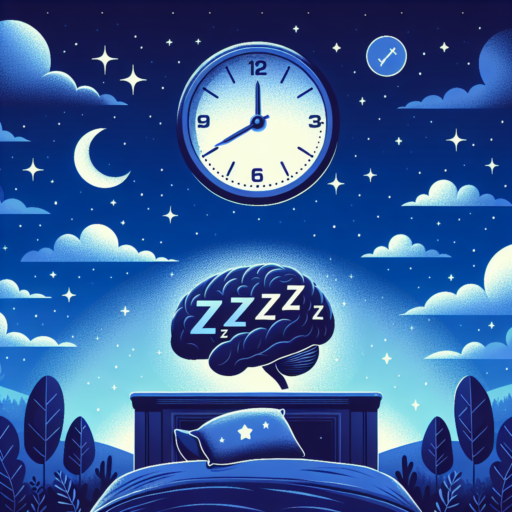Understanding Normal Sleep Stage Percentages
When examining the composition of a healthy sleep cycle, it’s essential to break down the typical percentages attributed to each sleep stage. Understanding these percentages can provide insights into the quality and structure of your sleep, highlighting the importance of each phase for overall health and well-being.
The Structure of Sleep Cycles
The sleep cycle consists of several stages, including light sleep, deep sleep (or slow-wave sleep), and REM (Rapid Eye Movement) sleep. Each plays a crucial role in bodily recovery and brain health. Adults typically cycle through these stages 4-6 times during a night’s sleep, with each full cycle lasting about 90 minutes.
Normal Sleep Stage Percentages
- Light Sleep: You spend the most significant part of your sleep in this stage, around 50-60% of total sleep time. It acts as a transition period between wakefulness and deeper stages of sleep and is vital for memory consolidation and muscle relaxation.
- Deep Sleep: This stage accounts for about 20-25% of your night. It’s when the body performs most of its healing and regrowth, strengthening the immune system and rebuilding muscles and tissues. Deep sleep is crucial for physical recovery and growth.
- REM Sleep: Making up approximately 20-25% of your night, REM sleep is essential for mental health, playing a significant role in emotional regulation and memory. It is in this stage that most dreams occur, and the brain processes emotions and memories from the day.
Understanding the normal percentages of each sleep stage allows individuals to assess their sleep patterns and identify potential disruptions. It serves as a foundation for improving sleep hygiene and overall health.
The Role of Each Sleep Stage in Your Health
Understanding the role of each sleep stage in your health is essential for recognizing the importance of a good night’s sleep. Sleep is not just a passive period of rest, but a complex, active state that plays a crucial role in our physical and mental well-being. Each stage of sleep contributes uniquely to the body’s repair and growth processes, highlighting the need for an uninterrupted and balanced sleep cycle.
NREM (Non-Rapid Eye Movement) Sleep
The NREM sleep stage is divided into three phases, each playing a distinct role in health. The first phase, known as N1, acts as the doorway between wakefulness and sleep, allowing the body to begin its transition. The second phase, N2, further reduces your heart rate and body temperature, preparing you for deep sleep. During the third phase, N3, often referred to as deep sleep, the body conducts crucial restoration work. This includes tissue repair, growth, and strengthening the immune system, underlining the vital role of deep NREM sleep in physical health recovery and growth.
REM (Rapid Eye Movement) Sleep
The REM sleep stage, occurring first about 90 minutes after falling asleep, is primarily associated with brain health and cognitive functions. It’s during REM sleep that the brain processes and consolidates information and memories from the day. This stage is essential for learning, memory retention, and emotional regulation. An adequate amount of REM sleep contributes to improved problem-solving skills and creativity, thus emphasizing its importance in maintaining mental health and cognitive efficiency.
Each sleep stage offers unique benefits, contributing to the overall well-being of an individual. NREM sleep focuses on physical restoration, while REM sleep is key to mental and emotional health. Proper cycle through these stages ensures a balanced restoration for both the body and mind, showcasing the intrinsic connection between sleep and health. Understanding and respecting the role of each sleep ruled by various sleep stages is fundamental to achieving optimal health and well-being.
No se han encontrado productos.
How to Calculate Your Sleep Stage Percentages
Understanding your sleep stage percentages is integral to improving sleep quality. Each sleep phase, from light sleep to REM and deep sleep, plays a crucial role in health and recovery. To calculate these percentages, you’ll first need data from a sleep tracking device or app. This technology often uses sensors to monitor movement and heart rate, providing insights into your sleep cycles.
Tracking Your Sleep Data
Begin by recording your sleep with a smartwatch or a dedicated sleep tracker for at least a week to gather enough data. Look for tools that break down your sleep into stages and provide you with a summary upon waking. Most modern devices will give you a detailed chart of when you were in light sleep, deep sleep, and REM sleep. Note the total time spent in each stage.
Analyzing Sleep Stage Durations
Once you have your data, calculate the total sleep time and then the time spent in each stage. For instance, if you slept for 8 hours (480 minutes) and spent 120 minutes in REM sleep, your REM stage percentage is 25% (120/480*100). Repeat this calculation for each sleep stage to understand the proportion of each stage within your total sleep.
Consistently tracking and analyzing your sleep stages can help identify patterns or issues with your sleep. For example, a lower percentage of deep sleep might indicate disturbances or restlessness at night. Adjusting bedtime routines, such as reducing screen time before bed or incorporating relaxation techniques, can lead to improvements in sleep architecture and overall health.
Differences in Sleep Stage Percentages by Age
The way we sleep evolves significantly as we age, showcasing notable differences in the percentages of various sleep stages we experience through the night. From infancy to late adulthood, the distribution of our sleep stages—ranging from light sleep, deep (slow-wave) sleep, to REM (rapid eye movement) sleep—shifts in a pattern that reflects the changing needs of our bodies and brains.
Infancy and Childhood
In the early stages of life, infants spend a remarkable proportion of their sleep in REM sleep, about 50% of their sleep time, which is thought to be crucial for the extraordinary development happening in their brains. As children grow, the percentage of REM sleep decreases, and the amount of deep sleep increases, providing the essential restoration needed for their rapidly developing bodies.
Adolescence to Young Adulthood
During adolescence, there’s a slight reduction in REM sleep and an increase in deep sleep, aligning with the surge in growth and hormonal changes characteristic of puberty. Transitioning into young adulthood, individuals tend to maintain a stable distribution of sleep stages, with deep sleep taking up to 20% of sleep time, highlighting its role in physical recovery and memory consolidation.
Understanding the shifts in sleep stage percentages by age not only sheds light on the physiological changes occurring as we grow but also underscores the importance of tailoring our sleep environments and habits to support these changing needs. Whether it’s considering the softness of a child’s mattress to promote deep sleep or the reduction in screen time for an adolescent to foster healthy REM cycles, recognizing these differences plays a critical role in enhancing overall sleep quality at every life stage.
Improving Sleep Quality: Adjusting Your Sleep Stage Percentages
Optimizing your sleep involves more than just getting enough hours of rest; it also hinges on the proportion of each sleep stage you cycle through nightly. Understanding and adjusting your sleep stage percentages can significantly enhance sleep quality, leading to better health, mood, and overall well-being. Our bodies cycle through different stages of sleep: Light Sleep, Deep Sleep, and REM (Rapid Eye Movement) Sleep. Each plays a pivotal role in our physical and mental recovery.
Deep sleep, often referred to as the healing stage, is crucial for physical recovery, cellular regeneration, and boosting the immune system. Unfortunately, many adults experience a decrease in deep sleep percentages due to stress, lifestyle choices, and even aging. To counter this, incorporating relaxation techniques before bedtime, such as reading or practicing meditation, can prepare your body for a more restorative night’s slumber. Additionally, maintaining a consistent sleep schedule can stabilize your internal clock, optimizing the time spent in each vital sleep stage.
On the other hand, REM sleep is imperative for cognitive functions, including memory consolidation and emotional processing. Boosting your REM sleep can be achieved by reducing alcohol and caffeine consumption in the hours leading up to bedtime, as these substances can disrupt the delicate balance of sleep stages. Furthermore, engaging in regular physical activity can enhance the quality and percentage of REM sleep, attributed to the body’s increased need for cognitive and physical recovery post-exercise.
Common Disorders and Their Impact on Sleep Stage Percentages
Sleep, a crucial element of our daily lives, is significantly influenced by various disorders that can disrupt its natural cycle. The architecture of our sleep, divided into non-REM (Rapid Eye Movement) and REM stages, can be profoundly affected, altering the percentages of time we spend in each phase. Understanding the impact of these disorders on our sleep stage percentages is essential for recognizing and addressing potential sleep issues.
Some common disorders such as insomnia, sleep apnea, and restless legs syndrome, have a notable impact on sleep architecture. For instance, sleep apnea, characterized by repeated breathing pauses during sleep, commonly leads to a significant decrease in REM sleep. This reduction can affect mood and cognitive abilities, as REM sleep is crucial for memory consolidation and emotional regulation. On the other hand, individuals suffering from insomnia may experience a decrease in both deep (non-REM) and REM sleep stages, leading to fatigue and a host of other health issues.
Impact of Restless Legs Syndrome on Sleep Architecture
Restless Legs Syndrome (RLS), another prevalent disorder, can cause an increase in nighttime awakenings and a decrease in the deep non-REM sleep stage. This reduction in deep sleep ultimately affects the body’s ability to repair muscle tissue and cells, impacting overall health and wellness. RLS sufferers often report a persistent feeling of tired, as their sleep fails to reach the restorative stages needed for full recovery and energy restoration.
In summary, the disturbance caused by common sleep disorders on the sleep stage percentages can have far-reaching effects on an individual’s health, day-to-day performance, and quality of life. Identifying and understanding these impacts is a critical step towards seeking appropriate treatment and improving sleep quality.
Tracking Sleep Stages: Tools and Technologies
Understanding and tracking sleep stages is crucial for improving sleep quality and overall health. With the advancement in technology, there are numerous tools and technologies designed to monitor these stages accurately. These innovations not only help in identifying sleep patterns but also in detecting any disruptions that may affect the restorative process of sleep.
Among the plethora of tools available, wearable devices like smart watches and fitness trackers stand out for their convenience and advanced features. These gadgets are equipped with sensors that detect movement and heart rate to estimate the different sleep stages, including light, deep, and REM sleep. Users can easily access detailed insights about their sleep quality and duration through associated smartphone apps.
Non-Wearable Sleep Tracking Technologies
For those who prefer not to wear devices during sleep, there are non-wearable options such as bed-based sensors and smart mattresses. These technologies work by monitoring pressure changes and body movement throughout the night, providing a comprehensive analysis of sleep cycles without the need for direct body contact. Such innovations have made it easier for individuals to gain a deeper understanding of their sleep patterns without sacrificing comfort.
Optimizing Normal Sleep Stage Percentages for Better Performance
Understanding and optimizing normal sleep stage percentages is crucial for enhancing overall performance, both mentally and physically. During sleep, the body cycles through various stages, each playing a vital role in health and restoration. The journey through light sleep, deep sleep, and REM (Rapid Eye Movement) sleep has profound impacts on our ability to learn, memorize, and regenerate.
To optimize sleep stages for better performance, it’s essential to focus on sleep hygiene and environmental factors. Ensuring a consistent sleep schedule, reducing exposure to blue light before bedtime, and creating a restful environment can significantly improve the quality of each sleep stage. Maintaining a balance between deep sleep, which aids in physical recovery, and REM sleep, which supports cognitive functions, is key to achieving optimal health and performance.
Moreover, incorporating practices like mindfulness and relaxation techniques before bed can enhance the transition through sleep stages. Activities such as reading, meditating, or taking a warm bath can help increase the percentage of deep and REM sleep. These practices not only improve sleep quality but also contribute to better emotional and psychological resilience, furthering overall performance.




